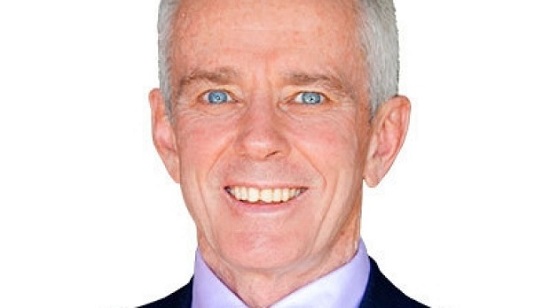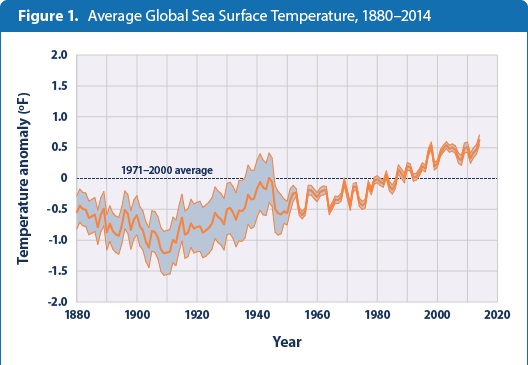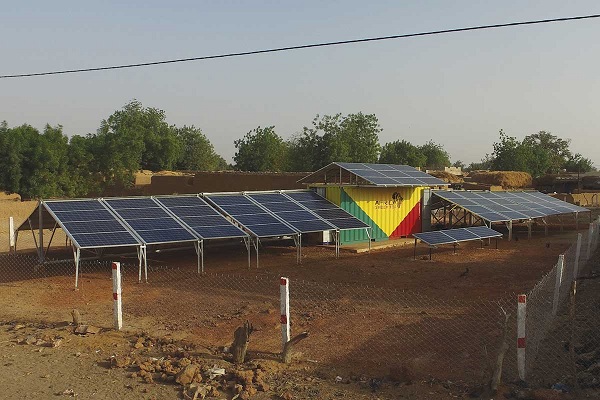1. Potential One Nation senator wants climate scepticism taught in schools
His boss, Pauline Hanson, thinks he has the “true facts”, and in denialists quarters he has gained a reputation for exposing corruption in the IPCC, the CSIRO and elsewhere.
-
Mr Roberts’ views appear to be driving One Nation’s extreme climate policy agenda, which includes pushing for a royal commission into climate science and abolition of the Renewable Energy Target.
It also wants the teaching of climate science in schools to be based on “the scientific method of scepticism”.
One Nation wants the Bureau of Meteorology reviewed, including “public justification of persistent upward adjustments to historical climate records” and a review of the CSIRO to determine whether funding has influenced its climate claims.
Mr Roberts is listed as a project leader for the Galileo Movement, a prominent climate-sceptic group that boasts broadcaster Alan Jones as its patron.
Queensland looks like returning 3 Labor, 4 LNP, one One Nation and one Green, that makes 9. The last 3 will most likely go to 3 of the following 4 – a Liberal Democrat, an extra Labor, an extra LNP, or a second One Nation. Here he is:

2. Election promises to save the Great Barrier reef are too little too late
In an article published before the election (paywalled) Tim Flannery said both parties largely ignored the plight of the GBR and were effectively fiddling while Rome burned by concentrating mainly on water quality:
- Both Labor and Liberal pledges largely miss the point. The main peril the reef faces is global greenhouse gas emissions which drive warming of surface waters that can damage coral even in the absence of El Niño. Ironically, the Liberals’ A$1 billion would be diverted from the Clean Energy Finance Corporation, one of Australia’s main tools for cleaning up the nation’s energy sector.
If we carry on as now, within five years there will be enough greenhouse gas in the atmosphere to carry global temperatures to 1.5 ºC above the pre-industrial average. In the circumstances, only a state of global emergency aimed at saving the reef would be sufficient to give it a chance.
Australia is in an extremely strong position to lead in this. Its electricity sector is dominated by 21 coal-fired power plants, which include some of the oldest, dirtiest and least efficient in the developed world.
A report by researchers at the University of Oxford’s Smith School of Enterprise and the Environment has pointed out that if 290 of these kind of coal plants closed around the world in the next few years, there is a good chance of avoiding dangerous climate change.
3. Turnbull waiting for Climate Change Authority report
Earlier I pointed out the the LNP had an excuse for not having a fully fleshed out climate change policy to take to the election because the CCA was due to report by June 30 on its recommendations as to what Australia should do to meet its Paris commitments.
As Giles Parkinson reports, the CCA report was delayed until after the election. He says the report:
- could lay the foundations of a much-needed bipartisan approach to climate policy. Labor’s policy for an emissions price based loosely round a “baseline and credit” scheme is seen as similar to that which would naturally evolve from Direct Action, and its so-called Safeguard mechanism.
I suspect that the conservative right wing of the Liberal Party would become apoplectic, and the Nationals are likely to explicitly forbid such a development in the Coalition Agreement.
4. Will Turnbull’s Coalition take on Australia’s energy oligopoly?
Giles Parkinson asks this question.
He picks his way through how the industry has given us higher prices and seem intent on sticking with fossil fuels. Here’s the bottom line:
- The answer for the Coalition government is pretty obvious. It’s time Australia joined the rest of the world in adopting ambitious renewable energy and emission reductions targets, and stopped pretending that fossil fuel technologies are the only answer.
There is a suite of policy options available to them: a carbon price, a higher renewable energy target, a longer-dated RET, and a RET mechanism that imposes penalties on utilities that fail to meet targets, rather than consumers.
They could impose emissions standards on coal plants, and vehicles. They could accelerate the exit of coal plants by imposing age limits. Most of all, they could instruct regulators to do all they can to remove the obstacles in the way of new technologies, and new business models that will not just clean up Australia’s grid, but make it more accessible to competitors and emerging technologies, and also cheaper for consumers.
None of this is rocket science. The (Labor-led) states and territories have shown how it can be done. Even John Howard illustrated how a government can “reach across” and dump its ideological opposition to proposals such as the carbon price.
But it comes down to whether the Coalition is serious about “jobs and growth” and “innovation”, or is just interested in protecting the interests of the big players at the expense of consumers.
5. Sea surface temperature
Here’s the global sea surface temperature from the Environment Protection Agency site linked above:

6. Solar power plant in a box
German start-up company Africa GreenTec has built a solar power plant that folds out of a shipping container, and can be mounted in two hours. The first was shipped to Mali in December last year.

Designed with a battery it can provide lighting for a few hours for a village of 120 houses.
The next version is bigger, with double the battery storage, plus built-in water pumps and water filter.
The solar power is cheaper than the diesel it is meant to replace.


This backyard farmbot in cool. For the time deficient or non-green thumbed.
I despair at times Brian:
And
Federal MP’s should stop talking about something as silly as the carbon price and do something radical and look at the ACT governments renewable auction scheme which was the only government based scheme that was actually working during the Abbott years. This ACT competitive tendering based scheme that actually works without requiring artificial price increases. A similar scheme that is now being used in many countries around the world.
Renew economy is now saying that the ACT has got such good prices out of its auction scheme that the ACT may be getting its clean energy for free!
John, emissions trading schemes seem to be still favoured by lots of people, including Giles Parkinson. So I suspect you’ll be tearing your hair out for a while yet.
I still have a query about stability of supply when you get a high percentage of renewables. I had a link to an article about Germany that discussed this, but I’ve lost it.
The ACT sits in a sea of grid-linked conventional energy. So does Germany in the European context. SA have been having some problems, sitting on the edge and waiting for a connector upgrade to Victoria. I’m not sure Parkinson is unbiassed in talking about the issue. It’s a bit too technical for me.
Brian: I think the SA problem was that they simply didn’t have enough total power at times while the work on the interconnect was going on.
In terms of stability one of the advantages of solar PV and batteries is that they can be set up to allow rapid turning on or off in small increments
One of the other hand solar can drop rapidly when clouds go over but these drops should be predictable.
Dont know how fast wind can be changed but it certainly can be ramped up or down faster than coal fired power.
Solar towers with heat storage should behave in a similar manner conventional coal fired power.
John, I’ve got two articles I’ll post in the next CC. What they agree on is that the cold snap has increased demand, and that gas prices are so high that it’s becoming uncompetitive on price, so some of the more efficient gas power stations have been shut down.
Nah, too long, it will have to be a separate post.